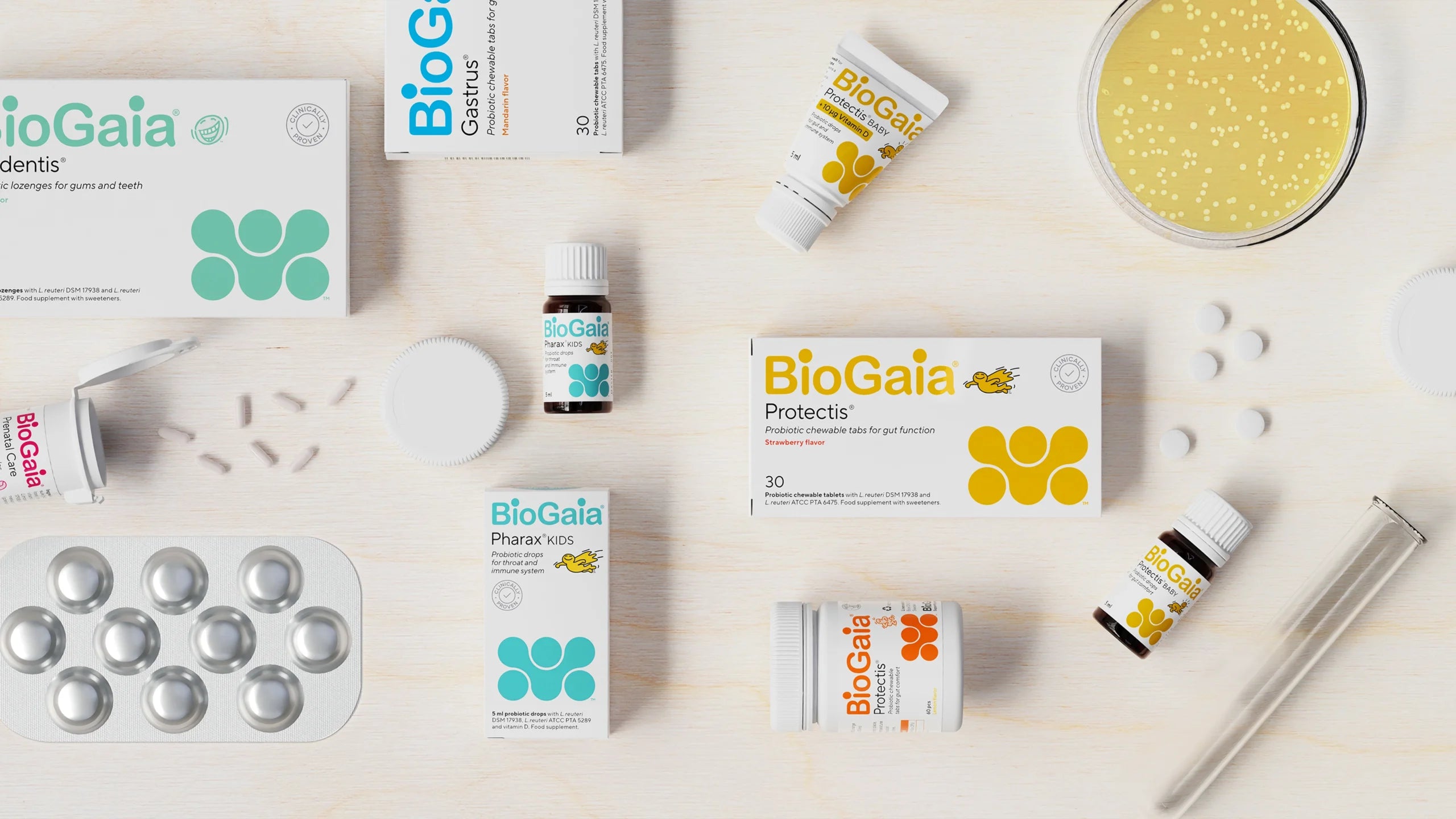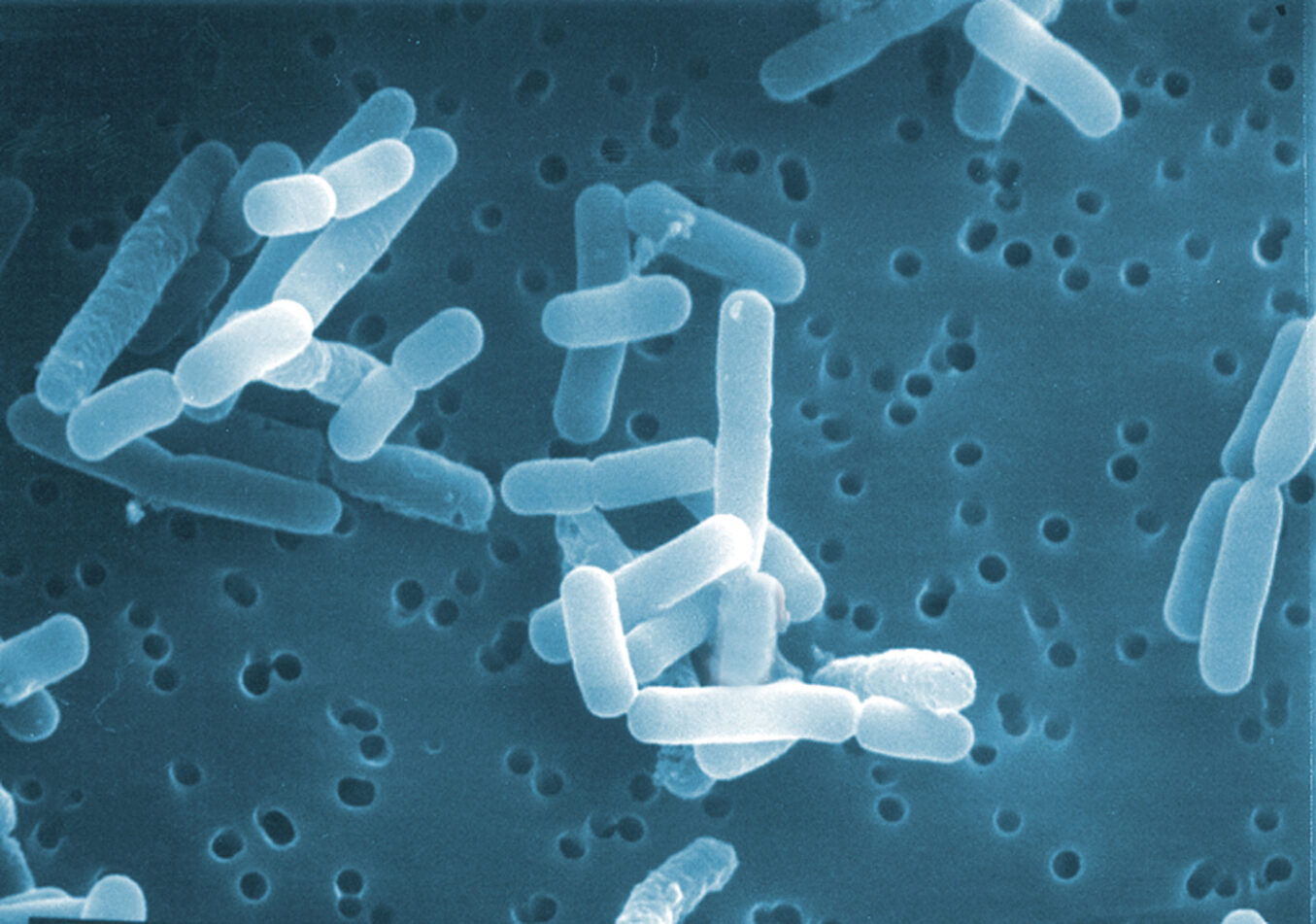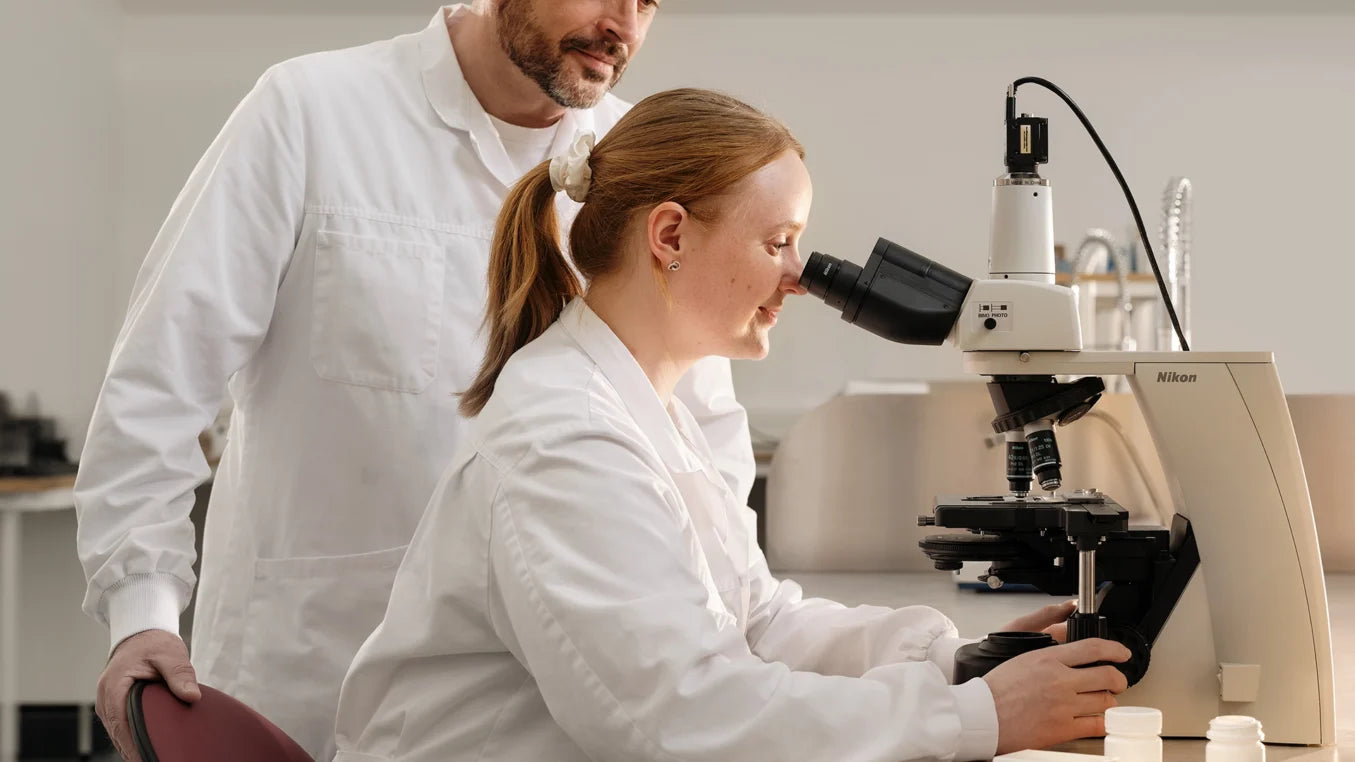What are probiotics?

Beneficial Bacteria
Probiotics: derived from the Latin “pro” (for) and “biota” (life).

To be officially classified as probiotics according to WHO, probiotic products must contain live microorganisms that, when administered in adequate amounts, confer a health benefit on the host.
1. Beneficial living microorganisms
The incredible diversity of microorganisms encompasses fungi, yeasts, viruses, and more, yet the most common probiotic microorganisms are bacteria.
To be called a probiotic, the bacteria must remain alive and maintain viability throughout the product’s shelf life. This requires expertise and careful handling during production, packaging, and storage. Exposure to humidity, high temperature, and the presence of oxygen all play a role; therefore, probiotics require meticulous end-to-end handling to ensure that these delicate microorganisms survive. BioGaia employs various methods to assess the viability and activity of our bacterial strains. These techniques ensure that all BioGaia probiotics remain alive, safe, and effective.
BioGaia is backed by science
We collaborate with leading academic research institutions and these partnerships allow us to validate our rationally designed probiotic formulations through rigorous clinical trials. Most of our trials are double-blind, randomized, and placebo-controlled, ensuring robust scientific evidence.
As of 2024, BioGaia probiotic strains have been tested in 270 clinical studies in 23 000 individuals. Read more about our strains and research here.
Stringent Quality Standards
From state-of-the-art manufacturing to storage and distribution, BioGaia follows strict international guidelines. Our quality control measures ensure that every batch meets safety and efficacy standards.
Individually fermented and freeze-dried, the bacteria in our products remain dormant until they encounter saliva and reach a higher temperature, at which point they awaken, are clinically proven to be ‘alive’, and begin their probiotic effects.
2. Dosage and “adequate amounts”
Probiotic supplement dosing is measured by Colony Forming Units or CFUs. Clinical trials with a specific probiotic strain determine how many CFUs are necessary to deliver the intended health benefit. If the product contains several different bacterial strains, each strain should be defined and contain the exact clinically relevant dose and clinical trials done on the exact same dosage.
“Adequate amounts” include the recommended CFUs at the end of shelf-life, not the date of manufacture. The natural decline of living bacteria during storage must be considered at the production stage.
All BioGaia probiotic products are tested for total viable count, and the bacteria count is confirmed at the end of shelf life.
Note, the number of strains is not the most important thing to look for in a probiotic supplement. It is more important to select a probiotic strain that has been tested for a specific indication.
Reaches the GI tract alive
Live bacteria must survive the journey through the acidic environment of the stomach if they are to reach the gut alive. Our clinical studies show that our carefully selected probiotic species, such as L. reuteri, are proven to reach the gut alive.

3. What are the health benefits of good bacteria?
Bacteria and their role in human health.
It was not so long ago that all bacteria were thought to be bad. This was because the first bacteria we identified were pathogens that caused illnesses and infections. Today, we know that most bacteria are either completely harmless or even vital to our health.
BioGaia’s L. reuteri strains have shown notable effectiveness in over 270 clinical studies involving more than 23,000 individuals of various ages.
Classification of probiotics
Probiotics are beneficial bacteria classified by genus, species, and strain. For a probiotic to be proven effective, it must be described on a strain-specific level and provide health benefits proven through clinical studies conducted on humans, not just preclinical studies.
The selection of bacterial strains is crucial, as different strains within the same species can have varying effects. Identifying the right strain is essential for achieving the desired probiotic impact on health.
Limosilactobacillus
reuteri
Protectis®
⇐ Genus ⇒
⇐ Species ⇒
⇐ Strain ⇒
Homo
sapiens
You
The health effect of a probiotic strain is different
The genetic variation among probiotic strains contributes to their diverse functionalities and health benefits, making each strain unique in its potential impact on human health.
While many probiotic supplements include bacteria categorized under the same genus and species, their properties can vary significantly depending on the strain. For instance, different Limosilactobacillus strains may have various properties and health effects.
Probiotic strains and clinical trials
To claim health effects, the bacterium must therefore be defined and tested in clinical trials at the strain level. When talking about lactic acid bacteria we need to clarify which strain we refer to, because the fact that a product contains “lactic acid bacteria” or “Limosilactobacillus reuteri” is not enough.
We need to specify both species and strain name, for example, Limosilactobacillus reuteri Protectis®, to know what probiotic we are referring to and what benefits to expect.
If a probiotic product contains multiple strains, then the combination of strains needs to be tested in clinical trials.
Health benefits of patented BioGaia’s probiotic strains
BioGaia’s L. reuteri strains are among the most extensively studied in both preclinical and clinical research. Over 270 clinical studies have been conducted involving more than 23,000 individuals of various ages.
Our probiotics are clinically evidenced to show improved human health outcomes within areas including gut-, immune-, oral health and other areas, such as mental health.*
BioGaia currently has over 600 granted patents for various bacterial strains. Learn more about our strains here.
The future of health-boosting microorganisms
As science delves deeper and technology accelerates, the future of probiotics heralds exciting possibilities for shaping human health and well-being.*
This evolving landscape promises innovative solutions to address a myriad of health concerns, shaping the way we perceive and harness the power of beneficial bacteria for human well-being.*
In this exciting frontier, both traditional and next-generation probiotics are poised to elevate human health.*

Next-generation probiotics
Next-generation probiotics represent cutting-edge science in health and wellness. Empowered by new technologies, our researchers are unlocking the potential of these previously uncultivable powerhouses.
These advanced strains and formulations combine with precision science to target specific microbial imbalances, offering tailored solutions for diverse health concerns.
While research is still young, we believe the possibilities are vast. From our newly opened laboratory in Eslöv, Sweden, our industry-leading work in metagenomics and strain development contributes to the exciting field of next-generation probiotics.
Unlocking a new frontier for human health
Embracing a holistic approach to wellness, the future of probiotics – both traditional and next-generation probiotics – stands poised to revolutionize preventive healthcare, empowering healthcare providers and individuals to cultivate thriving microbial ecosystems and unlock their full potential for vitality and longevity.*

Four types of biotics:
Key differences explained
There are many different “biotics” available including prebiotics, probiotics, synbiotics, and postbiotics – what’s the difference?
- Prebiotics are fibers that nourish beneficial bacteria.
- Probiotics are live microorganisms that offer health benefits when consumed in adequate amounts.
- Synbiotics combine both probiotics and prebiotics.
- Postbiotics are inactivated probiotics with potential health benefits.
Each type serves a distinct role in supporting overall well-being.

Prebiotics: Nourishing the microbiota
Prebiotics serve as nourishment for our microbiota. While humans cannot digest prebiotics, certain beneficial microbes can. These microbes produce beneficial compounds, such as short-chain fatty acids, through the utilization of prebiotics, thus promoting a healthy microbiota.
Ideally, a prebiotic should resist the actions of stomach acids, bile salts, and intestinal enzymes, remain unabsorbed in the upper gastrointestinal tract, and be easily fermentable by beneficial intestinal flora (Pandey et al., 2015).

Probiotics: Cultivating good bacteria
Probiotics are living microorganisms, often referred to as “good bacteria,” which can be sourced from various places including foods like yogurt or fermented foods, as well as probiotic supplements, such as BioGaia.
According to the World Health Organization and the Food and Agriculture Organization WHO/FAO, 2002, probiotics, when consumed in adequate amounts, confer health benefits on the host.

Synbiotics: A synergistic approach
Synbiotics combine the benefits of both probiotics and prebiotics. The term “synbiotics” underscores the synergistic relationship between probiotics and substrate for the microbiota.
Synbiotic products aim to enhance the survival of live microbial supplements in the gastrointestinal tract while selectively stimulating the growth and metabolism of health-promoting bacteria (Pandey et al., 2015).

Postbiotics: Harnessing inanimate microorganisms
Defined by the International Scientific Association for Probiotics and Prebiotics (ISAPP) in 2021, postbiotics represent a novel approach to promoting health.
Postbiotics consist of inactive microorganisms and their byproducts, which confer health benefits on the host (Nat Rev Gastroenterol Hepatol, 2021).
This innovative category opens new avenues for supporting health with potential benefits complementing probiotics such as improved long-term shelf life stability at room temperature.

Introduction to L. reuteri
With 30 years of microbiome research BioGaia is in the forefront of microbial health innovation.
